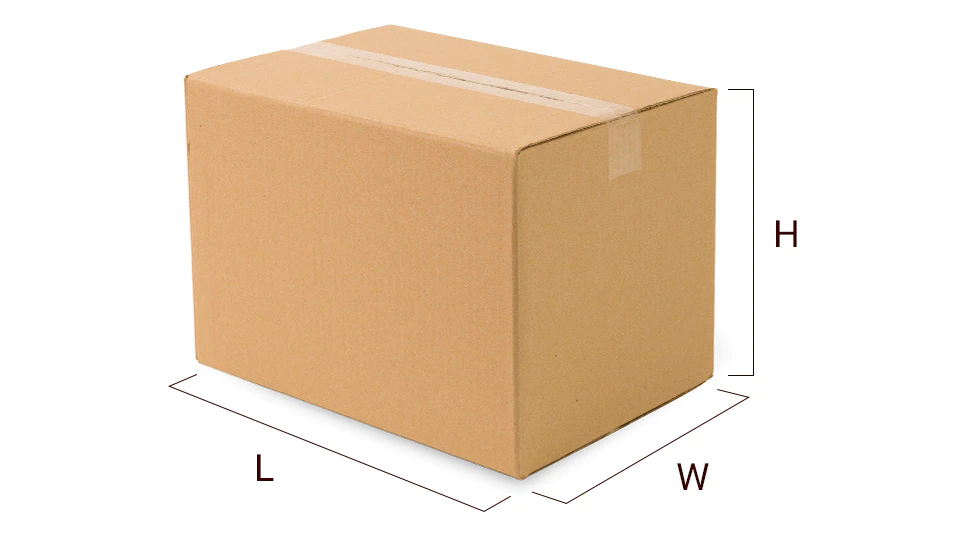
If you are an e-commerce business owner, shipping costs may be on your mind. According to a survey by Digital Commerce 360, 57% of retailers reported that their shipping costs increased in 2021, with 22% saying that the increase was significant. When you consider ways to reduce your shipping costs, you may have come across the term “dimensional weight.” But what exactly is it, and why does it matter? Prior to 2015, shipping costs were largely calculated based on weight and time in transit through shipping zones. The heavier the package and/or the further it traveled, the higher the shipping cost. However, due to the explosive growth of e-commerce in recent years, carriers now take dimensional weight into account when calculating costs. ShipWizard, as a third-party logistics (3PL) provider, can help you optimize the dimensional weight of your products and create a smooth and efficient order fulfillment process.
What Is Dimensional Weight?
Dimensional weight, also known as volumetric weight or DIM weight, is a method used by shipping companies to calculate the shipping cost of a package based on its size and weight. The idea behind dimensional weight is that larger packages take up more space on a carrier’s truck or airplane, even if they are relatively light in weight, and therefore should be charged at a higher rate.
The formula for calculating dimensional weight varies slightly depending on the carrier but generally involves multiplying the length, width, and height of the package (in inches) and dividing the result by a dimensional factor, which is typically 139 or 166. Each shipper uses a number called the DIM factor to calculate a package’s dimensional weight. UPS, FedEx, and USPS determine their own DIM factors. The resulting number represents the package’s “billable weight,” which is used to determine the shipping cost.
For example, if a package measures 20″ x 15″ x 10″ and weighs 10 pounds, the dimensional weight would be calculated as follows:
20 x 15 x 10 = 3,000 cubic inches
3,000 / 139 (or 166, depending on the carrier) = 21.58 pounds
In this case, the carrier would likely charge the shipper based on a billable weight of 22 pounds (either rounding up or down), even though the actual weight of the package is only 10 pounds. This is because the package’s large size would take up more space on the carrier’s vehicle and therefore incur higher transportation costs.
Why Is Dimensional Weight Important?
Major shipping companies, including FedEx, use dim weight to calculate shipping prices; this is called dim weight pricing.
Dim weight pricing may reduce shipping costs for customers who pack more efficiently.
Reducing packaging can make shipments more environmentally friendly by helping lower fuel emissions, and can help you avoid overpacking, which wastes material. Here are some of the reasons why dimensional weight is important for e-commerce sellers:
- Major shipping companies, including FedEx, use dim weight to calculate shipping prices; this is called dim weight pricing.
- Dim weight pricing may reduce shipping costs for customers who pack more efficiently.
- Carriers such as UPS work hard to optimize their fuel efficiency to both control costs for shippers and minimize their carbon footprint. DIM weight is one of many variables that they factor in when loading trucks and planning routes.
How To Optimize Dimensional Weight As Part of Your Fulfillment Strategy
You know how important it is to keep your shipping costs down, and with the right fulfillment strategy, you can! To optimize the dimensional weight of your product and reduce shipping costs, you can follow these steps:
- Measure your product accurately: Measure your product’s length, width, and height with a measuring tape or ruler. Be sure to measure the longest points on each side, including any bulges or irregularities. Round up each measurement to the nearest whole inch.
- Calculate the dimensional weight: Dimensional weight is calculated by multiplying the length, width, and height of your product in inches and dividing the result by a dimensional factor.
- Choose the right packaging: Choose the smallest possible packaging that can safely and securely hold your product. Avoid using large boxes with lots of extra space, as this will increase the dimensional weight of your package. One survey of leading fulfillment companies found that the average e-commerce shipping carton contains over 50% empty space, and that the potential for cost savings with efficient packaging could be in the range of 20% – 40%.
- Consider alternative shipping methods: Some shipping carriers offer alternative shipping methods that are designed for smaller packages or packages with lower dimensional weights. For example, you may be able to use a flat-rate box or envelope, which can help reduce your shipping costs. At ShipWizard, we shop around for the best shipping rates for our customers. All parcels we ship can use the Rate Shopping feature to compare across carriers and select your best option, such as cheapest on-time or cheapest postal service.
- Negotiate with your shipping carrier: If you are a regular shipper, you may be able to negotiate better rates with your shipping carrier. As a high-volume shipper, ShipWizard is able to negotiate discounts on behalf of its customers, which is just one of the many benefits of outsourcing order fulfillment to an expert such as ShipWizard.
Shipping Cost Optimization and More at ShipWizard
By partnering with ShipWizard as your 3PL provider, you can take advantage of our optimization techniques to minimize your dimensional weight and save on shipping costs, while still ensuring that your orders are delivered safely and on time. ShipWizard 3PL pricing helps you grow by only charging you for what you need and never adding any hidden or hidden fees. We offer an end-to-end integrated complete fulfillment and 3PL solution, customized to your needs, your industry, your customers and your goals. Whether you sell wellness supplements, headphones, kibble, or auto parts, whether you need us to process 5 orders per month or 5,000, we will find a way to optimize your shipping costs and ensure customer satisfaction.









